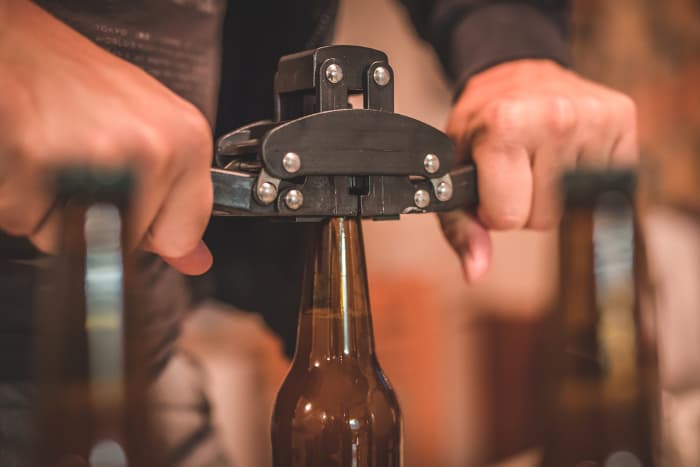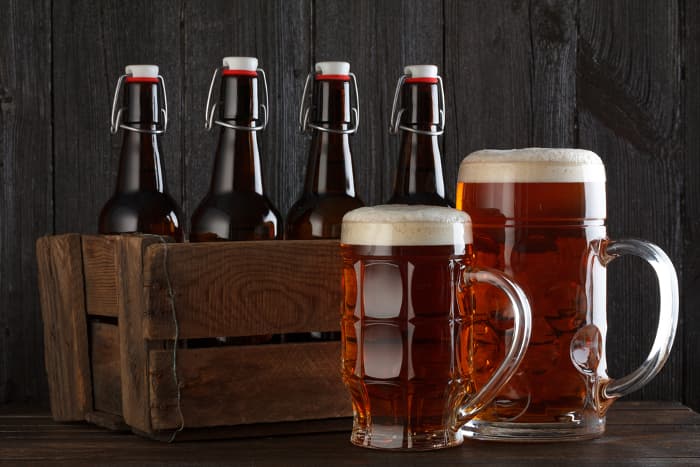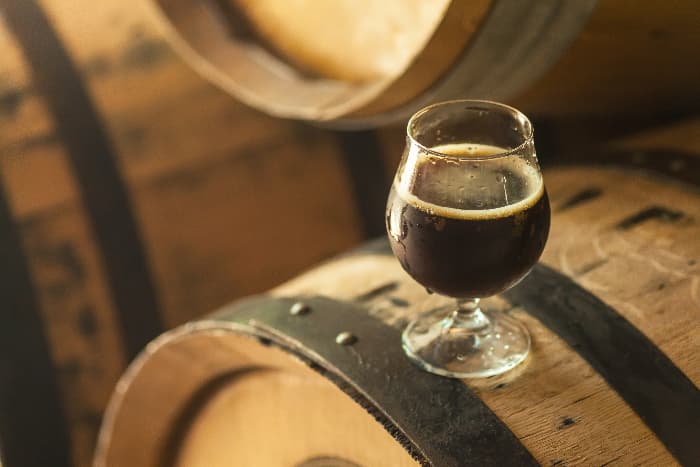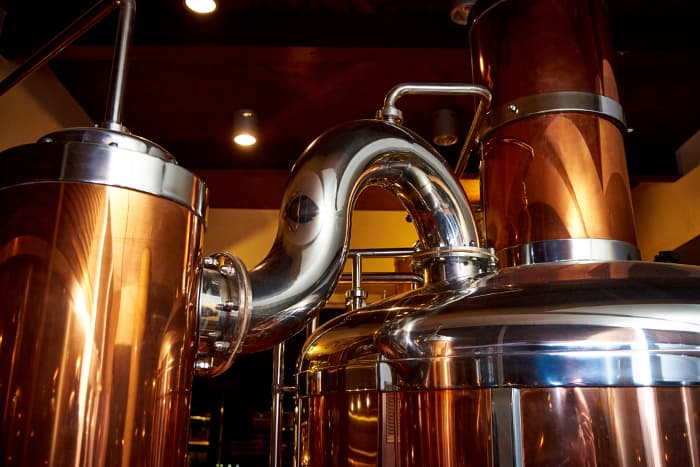Beer used to be thought of as a rather simple adult beverage. But as we’ve learned over the years, the art of brewing beer involves a lot more sophistication than most people realize. And today, more home and independent brewers are hitting the scene with some very interesting beer concepts each year. One term we often hear a lot these days is “microbrewing,” which leads to the obvious question of “what is micro brewery?”

Below we’ll answer that question and tell you all about the different types of breweries out there making some of our favorite beers.
What is Micro Brewery: The Differences Between the Main Five Types of Breweries
Before we dive into “what is micro brewery?”, let’s first get to know all about the different breweries. We’ll start with the four main types of breweries, which are named from pico, nano, micro, craft, to regional. These names don’t represent a specific beer style but rather the amount of beer the brewery produces.
Pico Brewery
A pico brewery is the smallest operation you can have and is mainly for personal use. They are often defined as using 1-3bbl systems, and their output can be producing a single beer every other day or 500 barrels every year.

Nano Brewery
As mentioned earlier, the main difference between the four main types of breweries has to do with how much beer they produce. However, there Nano breweries are a bit tricky in this regard as there is no specific number of barrels or gallons of beer that classifies a brewery as a nano-brewery.
A common definition is that nano-breweries produce less beer than all the other types (except for pico breweries). However, that may be a bit of an oversimplification, as the quantity threshold isn’t clearly defined. Another definition is any brewery run by one or two people.
These breweries can be small home-based breweries where someone brews beer for themselves or a few friends, or a larger production that brews just under the limit need to be a microbrewery.
Micro Brewery
Now we get more into “what is micro brewery?” For a brewery to be considered a microbrewery, they have to meet the following criteria:
- Produce up to 460,000 gallons or 15,000 barrels of beer each year.
- Sell 25 percent or more of its beer at the brewery. We often see this with establishments like bars, restaurants, and brewpubs that also double as micro breweries.
- They have a reputation for brewing “specialty beers.” Micro breweries produce mainly small bath boutique brews, sometimes brewed just for an event or season and often crafted to spotlight a special ingredient such as a specific hop.
So, to sum it up, micro breweries are those that produce fewer than 15,000 barrels of beer per year.

Craft Brewery
Craft Breweries is a term that best describes micro breweries that have expanded to become larger-scale operations. However, the size of the operation is not the only determining factor. It’s the only brewery on the list that also must adhere to certain brewing standards and techniques. Here are the key factors that make a brewery a craft brewery.
- The brewery has to produce less than 6 million gallons of beer per year.
- Must be independently owned, meaning no more than 24 percent of the company can be owned by outside interests.
- The beer is often left unpasteurized and adds no chemicals or preservatives.
- They brew beer the old-fashioned way while exploring experimental flavors and new beer styles.
- Craft beers are generally served at temperatures slightly warmer than most beers to bring out their full flavors. This is because the aromatic compounds in colder brews are released at lower rates.
- Lighter craft beers are served colder, while darker varieties are served warmer.
- When brewing their flagship beers, craft breweries must always use traditional ingredients like water, barley, malts, yeast, and hops, that are real, not imitation. If they wish to use adjuncts in their brew, it must only be for flavor profile purposes rather than the cost-saving motives of bigger macro breweries.

Note: A pico, nano, or micro brewery can also be considered a “craft” brewery if it follows the same traditional brewing standards. And due to the ownership restrictions, a regional or macro brewery can never be a craft brewery unless it remains 76 percent private while following the craft brewing standards of production.
Regional (Macro) Brewery
A Macro brewery is considered a larger national (or international) brewery that brews and distributes over 6 million barrels each year. A Macrobrew is a beer that’s mass-produced and is generally cheaper than craft beers.

Other Types of Breweries
While we’ve answered, “what is micro brewery?” There are also specialty subcategories of breweries that are usually sized as nano, micro, or craft breweries.
Brewpub Brewery
In places where brewers are allowed to sell beer directly to consumers, they usually start brewpubs, a combination of a brewery and bar/restaurant. To qualify as a brewpub, the brewery must meet the following criteria:
- Twenty-five percent or more of their beer has to be sold onsite.
- They dispense beer straight from their storage tanks to the consumer’s glass or mug.
- Beer storage tanks are commonly used as part of the brewpub’s aesthetics giving the venue a more industrial look than most bars and restaurants.
- The tanks also give the establishment a certain authenticity.

Taproom Brewery
A taproom brewery has much in common with brewpubs as they also sell 25 percent or more of their beer on-site. The biggest difference is that they offer very little if any food options, as though saying they are all about the beer and only the beer.
Independent Brewery
Independent breweries can be nano, micro, or craft breweries, as no more than 24 percent of the brewery is owned by outside interests. And in 2017, the Brewers Association created the independent craft brewer seal allowing customers to identify breweries that meet the craft beer standards.
Today over 4,000 craft brewers use this seal to identify their products as true craft beer, thus emphasizing their beer’s higher overall quality. The Brewers Association represents 85 percent of the total volume of craft beer brewed and distributed in the United States.
The seal is also believed to have been a strategic strike back at the Anheuser-Busch company after they purchased ten independent breweries starting in 2011.
Beer drama ya’ll. The struggle is real.
Gastropub
Now, a lot of folks have probably heard the term “gastropub” and still have no clue what they are. Gastropubs is just the newest “hipster” version of the traditional public house and tavern.

Unlike a brewpub or taproom, the main focus of a gastropub is on its food. The name comes from the addition of using “gastronomy,” which is the art or practice of cooking and eating high-quality food. They combine this concept with the traditional pub tavern scene.
Gastropubs began popping up in the 1980s into the 1990s during the rise of the “foodie culture.” Brewers started to realize that people who love an authentic beer experience also enjoy combining that with a unique dining experience.
The first self-declared, authentic gastropub was an establishment in London, England, called “The Eagle,” which made its debut in 1991. Instead of a boring menu of fried foods and the sub-par service pubs were generally known to offer, The Eagle introduced a novel experience by combining creative foods with higher-quality craft brews.
What Is Micro Brewery: How Much Does it Cost to Start a MicroBrewery
We’ve already answered, “what is micro brewery?” But what about the startup costs? This could be a fun business opportunity for those who have a passion for brewing beer. However, one should keep in mind that depending on where you live. The market can be pretty competitive. For example, almost 79 percent of adults in America live within 10 miles of a brewery.
As far as the costs, you should know that starting a microbrewery from scratch is neither cheap nor easy. Generally, your basic startup operation costs between $300,000 and $350,000. This estimate likely includes the cost of used and new equipment, non-union labor, and tons of the owner’s personal elbow grease.

And, if you want to start with only brand new equipment, you can expect to spend between $100,000 to a couple of million bucks just on those costs.
You’ll also likely need outside investors or collateral to put down for a bank loan. If you already own a restaurant or bar and wish to convert it into a brewpub, this might cut your costs should you have enough space, own your own building or have a very flexible lease agreement.
By reading this article, you can learn more about the costs and all the equipment you’ll need to start your own micro brewery.
The main resources you need to succeed as a commercial microbrewery include:
- A practical business plan with strong goals
- A source for buying reliable equipment
- A partner with great business skills and acumen
- You’ve already mastered a few proven beer recipes on a pico or nano scale.
- Tons of determination and resilience

What is Micro Brewery: Conclusion
As you can see, the question of “what is micro brewery?” is one that can be both simple and a bit more complex (especially when you get into costs). Just remember, a craft brewery isn’t always going to be a microbrewery. Still, a pico, nano, or microbrewery can also be a craft brewery so long as it adheres to certain craft brewing and business standards.

To learn about some of the best breweries (micro and other), check out our best breweries blog posts.
